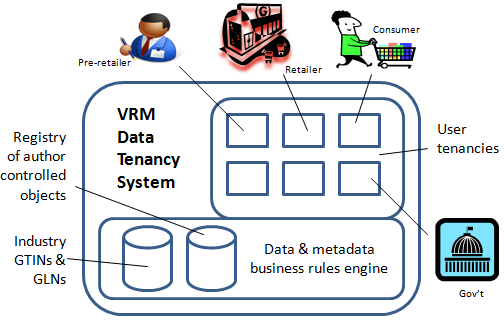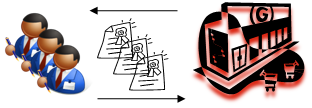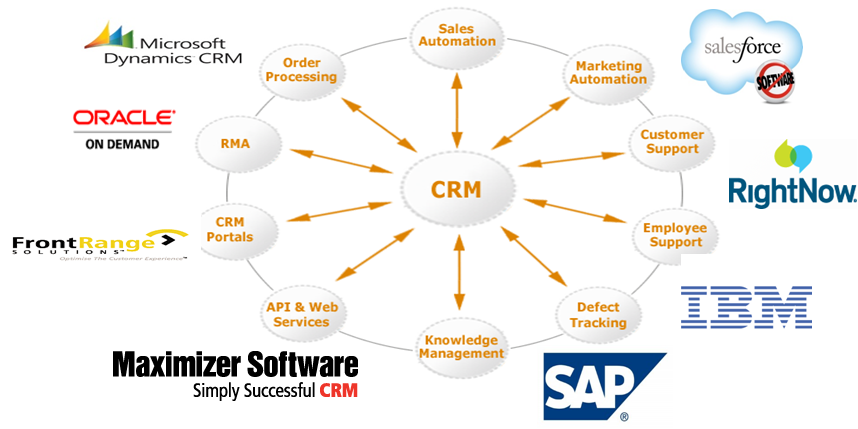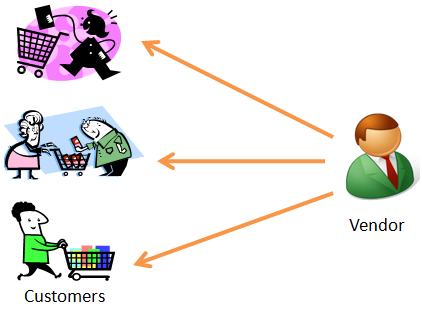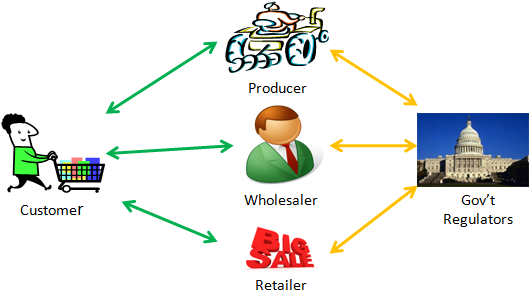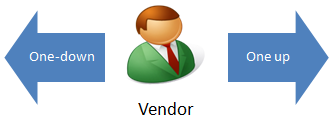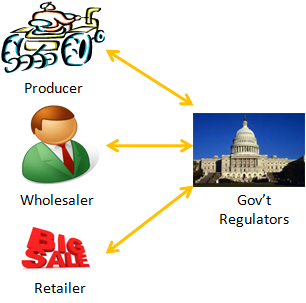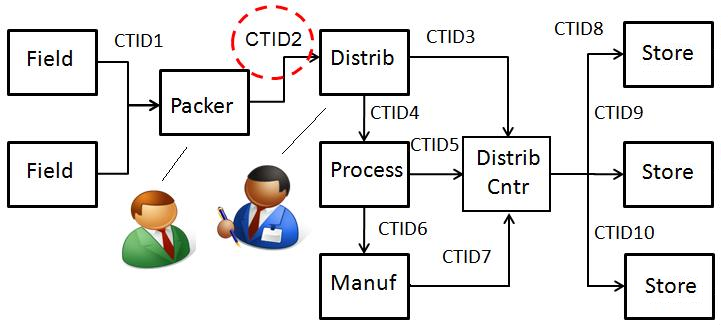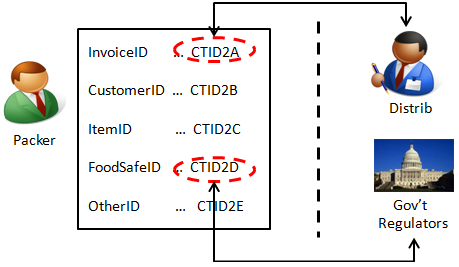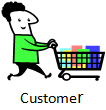The Whole Chain Traceability Consortium
 Monday, November 7, 2011 at 7:05PM
Monday, November 7, 2011 at 7:05PM The Whole Chain Traceability Consortium™ is currently comprised at its core of researchers, educators, extension specialists and collaborators at Oklahoma State University, North Dakota State University, Michigan State University, the University of Arkansas, and Pardalis, Inc., an Oklahoma advanced information technology company. These institutions are joined together by "sharing is winning" principles. Steve Holcombe, Pardalis' CEO, serves as a networker and coordinator among, between and beyond these institutions.
The vision of the Whole Chain Traceability Consortium™ is that new strategies for "whole chain" management of agricultural and food data - with a security model - are needed. We believe that these new strategies will increase the availability and quality in supply chains of transparent data. We believe that these new strategies will open up exciting sustainable business models for both large and small agricultural companies. We believe that social networking, the emergence of the "Internet of Things", and mobile technologies are dynamically driving this need. And, for instance, we believe that consumers will significantly benefit from real-time access to new data related to the safety of their food.
Whole Chain Traceability Consortium™ coalesced in preparing food safety proposals for over $50M in 2010 USDA NIFA agricultural funding. In August 2011 notification was received of an award (~$550K/3 YRS) under the USDA National Integrated Food Safety Initiative. Pardalis' enterprise-class, multi-tenancy is at the heart of that project. This project begins a process for a patent-hardened open source licensing strategy for food and ag supply chains branded with Pardalis’ Whole Chain Traceability Consortium™.
The Web was originally conceived as a tool for researchers who trusted one another implicitly. Building in the missing layers of trust and provenance that make possible “whole chain” information sharing is one of the “next Big Things” for the Internet. Global patent portfolios are expensive and time-consuming to obtain and protect. Pardalis has been patiently building a formidable global patent portfolio in the U.S., China, the EU and other countries since 2001. These patents cover critical methods for introducing trust and provenance to whole chain information sharing with information-centric networking.
Other funding activities - both national and international - are in process. That includes a pre-submission seeking funding under the NSF Partnerships in International Research and Education (PIRE). On 19 October 2011 the Whole Chain Traceability Consortium™ - led by Oklahoma State University - filed a pre-submission entitled "Advancement of a whole-chain, stakeholder-driven traceability and supply chain management system to improve food safety and reduce food waste". As well phrased by Leo Bonanni of SourceMap, global trade in agricultural and food products is a series of discrete transactions between buyers and sellers. It is generally difficult – if not impossible – to determine a clear picture of the entire life cycle of such products.
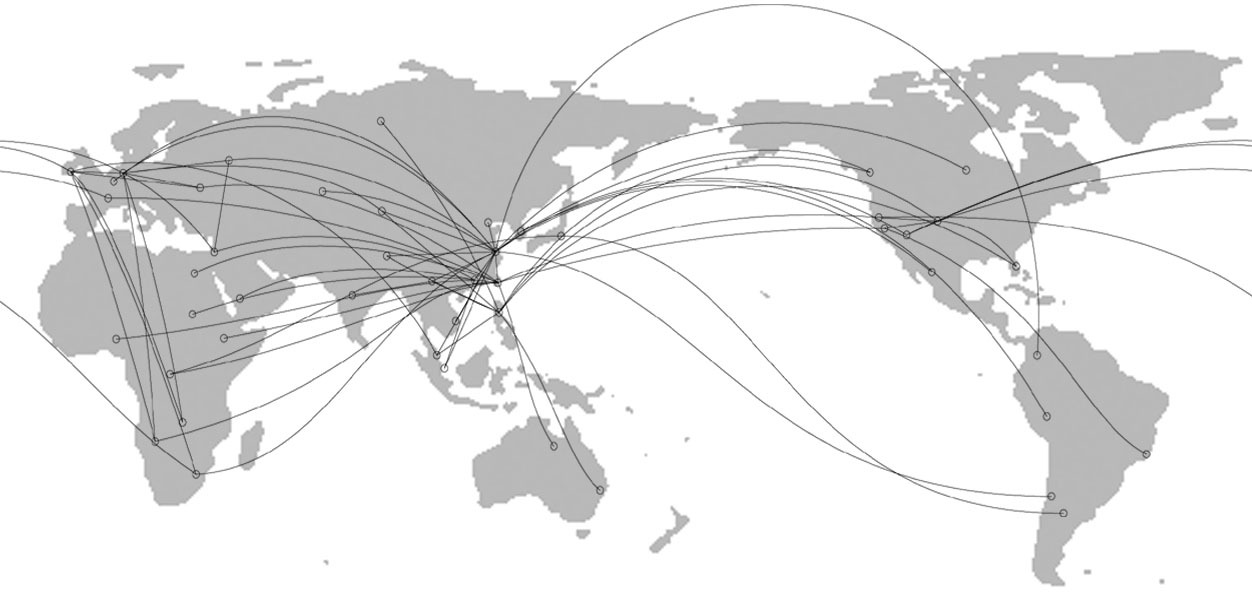
The goals of the proposed NSF PIRE research are epitomized by a vision of consumers able to point a smartphone at a food product bar code, and retrieve a global sourcing map and reliable information about the product. This access may help save peoples lives in a food safety recall, verify sustainable agricultural practices, and learn more from consumers about their personal experiences with food products.
Domestic collaborators with the Whole Chain Traceability Consortium™ in the NSF PIRE pre-submission include Top 10 Produce, LLC and SourceMap. International collaborators include Dr. Sjaak Wolfert, Sr. Scientific Researcher on ICT in Agri-Food Supply Chain Networks at the University of Wageningen, the Netherlands, and Coordinator of the EU funded Smart Agri-Food Project. Also, Prof. Maohua Wang, College of Information and Electrical Engineering, Chinese Agricultural University – Beijing, China. Prof. Wang is Director of Strategic Research on Key Technology of Agricultural Information Technology funded by National Science Foundation of China.
Check out this and other funding opportunities being discussed and considered by the Whole Chain Traceability Consortium™ at http://pardalis.squarespace.com/funding-opportunities/">http://pardalis.squarespace.com/funding-opportunities/.
There are three social networking sites for the Whole Chain Traceability Consortium™. One is the Whole Chain Traceability Funding Opportunities networking group on LinkedIn. Another is on Facebook at the Whole Chain Traceability Consortium page. There is also a Twitter account at @WholeChainTrace. For more information, visit any of these websites or contact any of the following:
-
Dr. Brian Adam, Oklahoma State University Professor of Agricultural Economics - http://agecon.okstate.edu/faculty/profile.asp?id=brian.adam&type=faculty
-
Dr. Michael Buser, Assistant Professor in the Department of Biosystems and Agricultural Engineering - http://bioenergycenter.okstate.edu/faculty/Buser
-
Dr. Deland Myers, Professor and Director, School of Food Systems, North Dakota State University - http://www.ag.ndsu.edu/foodsystems/contactus.html
-
Dr. John Stone, Co-Director and Sr. Research Scientist, at the Center for the Study of Standards in Society, Michigan State University - http://cs3.msu.edu/people/profile/stone-john/
-
Dr. Jean-Francois Meullenet, Head and Professor, Department of Food Science, University of Arkansas - http://foodscience.uark.edu/2349.htm
-
Steve Holcombe, Pardalis, Inc. - http://www.linkedin.com/in/steveholcombe
 Steve Holcombe
Steve Holcombe
Tracking & Incentivizing Data Sharing: The Whole Chain Traceability Consortium
Beth Hoffman, Managing Editor and Partner, Food+Tech Connect, interviewed Dr. Brian Adam, Oklahoma State University Professor of Agricultural Economics, Dr. Michael Buser, Assistant Professor in the Department of Biosystems and Agricultural Engineering, and me.
Introductory excerpt -
"Knowing where food comes from and how it was grown is a top priority in an increasing number of American households. But aside from costly technological solutions employed by large, vertically-integrated corporations, very little exists to follow food throughout fragmented food systems from ‘farm to fork.’ The Whole Chain Traceability Consortium ... aims to change that, and make it available on smart phones."
See the full post published on 29 Nov 2011 at:
http://www.foodandtechconnect.com/site/2011/11/29/tracking-and-incentivizing-data-the-whole-chain-traceability-consortium/
 Steve Holcombe
Steve Holcombe
Whole Chain Traceability: A Successful Research Funding Strategy
http://pardalis.squarespace.com/blog/2012/1/26/whole-chain-traceability-a-successful-research-funding-strat.html
 Steve Holcombe
Steve Holcombe
-------- Original Message --------
Subject: Update: National Institute for Whole Chain Traceability
From: "Steve Holcombe"
Date: Thu, January 19, 2012 11:15 am
To:
Dr. Deland Myers
Professor and Director
Great Plains Institute of Food safety
School of Food Systems
North Dakota State University
Dr. Steve Pueppke
Director of Michigan State University AgBioResearch
Dr. Lawrence Busch
Founding Director
Center for the Study of Standards in Society
Michigan State University
Dr. John V. Stone
Co-Director & Senior Research Scientist
Center for the Study of Standards in Society
Michigan State University
Dr. Jean-Francois Meullenet
Head & Professor
Department of Food Science
University of Arkansas
Dr. Sjaak Wolfert
Sr. Scientific Researcher on ICT in Agri-Food Supply Chain Networks
University of Wageningen, the Netherlands
Prof. Maohua Wang
(c/o Dr. Ning Wang)
College of Information and Electrical Engineering
Chinese Agricultural University
Beijing, China
Vladimir Krasojevic
Research Director at Gartner
Zurich, Switzerland
Dr. Sam Saguy
Professor of Food Science, Technology, and Innovation
Hebrew University of Jerusalem
Greetings, All,
Last fall I had the distinct privilege of personally soliciting from each of you a letter of support for the founding of a "National Institute for Whole Chain Traceability and Food Safety Research" at Oklahoma State University. Each of you submitted letters of support to Dr. Brian Adam, Professor, Department of Agricultural Economics at OSU. Your letters were received with great interest, hope and excitement. My final draft of the news release, which was personally submitted to Dr. Stephen McKeever, VP of Research and Technology Transfer at OSU, is attached. [Editors's Note: In fact, Dr. McKeever gave his own letter of support, too].
In your letters you appropriately noted that unfunded, multi-institutional activities do not commonly coalesce and stay together for as long as they had done so (over 2 long years) with the Whole Chain Traceability Consortium (WCTC). And you further noted that the initial funding and founding of the Institute was truly be a milestone achievement for the WCTC.
This last week I was informed by Drs. Buser and Adam that the National Institute will come into existence sometime later in 2012 but that neither the efforts of the "Whole Chain Traceability Consortium" nor "Pardalis Inc." will be specifically identified. At best I imagine there will be some reference to the activities of a "consortium" or something to that effect. Furthermore, I was informed that henceforth there would be no further, specific reference to the Whole Chain Traceability Consortium nor Pardalis Inc. in future, OSU-led traceability funding submissions. As to the reasons for these decisions, I would refer you to Drs. McKeever, Buser or Adam. But I will say that I was invited to continue my participation - at the same level of energy and interest - in current and future OSU-led traceability funding activities.
I regret to inform you that Pardalis will no longer be participating in the formation of the National Institute. Nor will Pardalis be participating any further in conjunction with OSU-led funding activities or funding submissions. This includes the currently funded USDA National Integrated Food Safety Initiative project, the NSF Partnerships in International Research and Education (PIRE) and the USDA Specialty Crops Research Initiative submission.
I want to again thank you for your letters of support. I was walking on “Cloud Nine”, as they say. And I want you to know that I had the very, very best of intentions in soliciting your support in a manner that was inextricably connected to the "sharing is winning" principles of the WCTC. Those principles remain unaltered and unaffected.
The WCTC will evolve. In fact, Pardalis Inc is already in the process of rebranding its trademark under the moniker of @WholeChainTrace™. Furthermore, Clive Boulton, co-organizer of the significant Seattle-area Google Technology User Group, has come on board as a technical advisor to Pardalis Inc., @WholeChainTrace™ and an even broader brand, @WholeChainCom™ (for Whole Chain Communications).
Thanks again for your support letters. I mean that. I sincerely hope that I have not lost an opportunity to again solicit your support for the future activities of @WholeChainTrace.
Cheers,
Steve
----
Steve Holcombe
CEO - Pardalis, Inc.
Cc:
Dr. Stephen McKeever, VP of Research and Technology Transfer
Dr. Brian Adam, Professor, Department of Agricultural Economics
Dr. Michael Buser, Assistant Professor, Department of BAE
 Steve Holcombe
Steve Holcombe
ADVANCEMENT OF A WHOLE-CHAIN, STAKEHOLDER DRIVEN TRACEABILITY SYSTEM FOR AGRICULTURAL COMMODITIES: BEEF CATTLE PILOT DEMONSTRATION
Sponsoring Institution: USDA NIFA
Grant No. 2011-51110-31044
Project Timeline: Sep 1, 2011 to Aug 31, 2014
Recipient Organization: OKLAHOMA STATE UNIVERSITY, BIOSYSTEMS & AG ENGINEERING, STILLWATER,OK 74078
Project Director: Buser, Michael | 405-744-5288 | buser@okstate.edu
Project Methods: The software development for a working, scalable stakeholder-driven "whole chain" agricultural commodity traceability system is broken down into four categories: 1) system architecture, 2) system software, 3) content-centric networking and 4) stakeholder feedback.
System Architecture: We propose to implement the distributed system using a content-centric networking (CCN) data framework such as the CCNx framework currently under development by Xerox PARC, (sic)
System Software: The proposed WCTS system will extend the existing supply chain software of Pardalis, Inc. As multiple stakeholders may be generating and accessing shared data, we will develop algorithms for data synchronization, reconciliation and certification. The system must provide reports such as supply chain traceability reports. A browser-based version of the user interface will be designed and implemented. A critical subset of these will be implemented as applications in mobile Android based smart phones.
Content-Centric Networking for Food Traceability: Initially, CCNx will be applied for commodity traceability to determine system performance characteristics such as bandwidth, caching requirements, delays, throughput, etc. CCNx's performance will be compared to the Internet Protocol. The security of CCNx for commodity traceability will be analyzed. In the second phase we will seek to alleviate the bottlenecks and weaknesses identified in the first phase, particularly the security vulnerabilities and trust implementation in the whole chain. We will first identify the security goals for a whole chain commodity traceability system to define security policies. These policies, which will include access rights, for example, will be enforced by credentials. Second, we will analyze the different levels of protection and privacy required by the different types of content. Third, we will implement trust in the whole supply chain within the CCNx framework by integrating credentials (Blaze et. al. 1996) with reputation-based trust management (Zacharia 2000) and policy-based trust management. We propose to create and discover by content the distributed credentials, reputations, users and data and thereby create a trust chain that is content-centric. Sanitation algorithms (Dilys 2007)) to filter content will be explored with a view to incorporating them within CCNx to ensure privacy.

